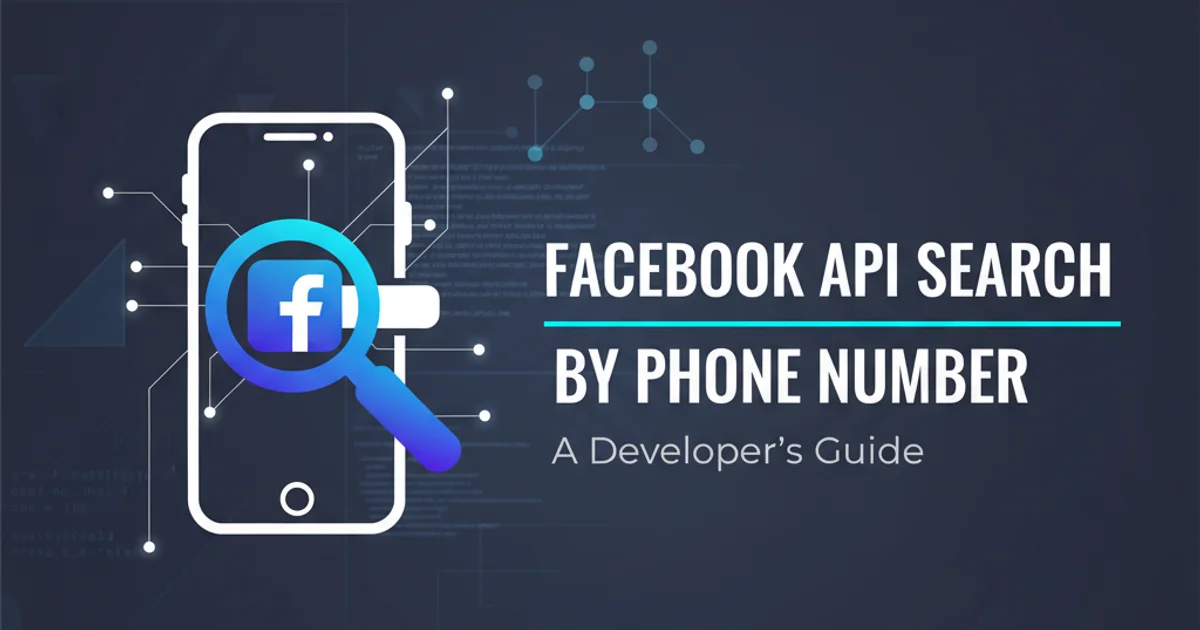Facebook API Search by phone number
Categories:
Searching for Facebook Users by Phone Number: Understanding API Limitations

Explore the historical context and current restrictions on searching for Facebook users by phone number through the Graph API, and learn about alternative approaches for user identification.
The ability to search for Facebook users by their phone number has been a frequently discussed topic among developers and businesses. While such functionality might seem intuitive for user identification or CRM integration, Facebook's Graph API has significant limitations in this regard, primarily due to privacy concerns and platform policies. This article delves into why direct phone number searches are not possible through the API and outlines the recommended approaches for interacting with Facebook user data.
Historical Context and Privacy Implications
In the early days of Facebook's platform, there were more permissive ways to identify users, including through contact information. However, as privacy concerns grew and data breaches highlighted the risks of easily accessible personal information, Facebook progressively tightened its API policies. The ability to search for a user by their phone number was identified as a potential vector for privacy violations, allowing bad actors to potentially link phone numbers to Facebook profiles without explicit consent or a legitimate use case. This led to the deprecation of any such direct search capabilities.
Current Facebook Graph API Limitations
As of the current Graph API versions, there is no public endpoint or method that allows you to search for a Facebook user's profile directly using a phone number. The API is designed to work with Facebook User IDs (fbid) or, in some cases, email addresses (for specific advertising or custom audience use cases, often requiring hashing and strict permissions). The primary identifier for a user within the Graph API is their unique Facebook User ID, which is granted to your application after a user authenticates and grants necessary permissions.
flowchart TD
A[Developer Application] --> B{Facebook Login / Permissions Request}
B -->|User Grants Access| C[Receive User Access Token & User ID]
C --> D{Graph API Calls (e.g., /me, /user_id/friends)}
D --X E[Search by Phone Number]
E[Search by Phone Number] --> F{API Rejects Request}
style E fill:#f9f,stroke:#333,stroke-width:2px
style F fill:#f9f,stroke:#333,stroke-width:2pxFacebook Graph API Interaction Flow, Highlighting Phone Number Search Rejection
Alternative Approaches for User Identification (with Permissions)
While direct phone number search is not possible, there are legitimate ways to identify or interact with users, provided they have granted your application the necessary permissions:
Facebook Login: The most common and recommended method. When a user logs into your application using Facebook Login, you receive their unique Facebook User ID and can access information they've explicitly permitted (e.g., name, profile picture, email). Your application can then store this User ID and link it to your internal user records.
Custom Audiences (for Advertisers): For advertising purposes, businesses can upload hashed customer lists (including hashed phone numbers or email addresses) to create Custom Audiences. This is not a search function but a way to target existing customers with ads on Facebook. The hashing ensures that raw personal data is not directly shared with Facebook.
Friend List (with
user_friendspermission): If a user grants your app theuser_friendspermission, you can retrieve a list of their friends who also use your application. This does not involve phone numbers but allows for social connections within your app.
It's crucial to understand that any interaction with user data must be initiated by the user through explicit consent via Facebook Login or other permission grants.
FB.login(function(response) {
if (response.authResponse) {
console.log('Welcome! Fetching your information.... ');
FB.api('/me', {fields: 'id,name,email'}, function(response) {
console.log('Good to see you, ' + response.name + '.');
console.log('Your Facebook User ID is: ' + response.id);
console.log('Your email is: ' + response.email);
// Store response.id in your database to link with your app's user
});
} else {
console.log('User cancelled login or did not fully authorize.');
}
}, {scope: 'public_profile,email'});
Example of using Facebook Login to retrieve user ID and email.